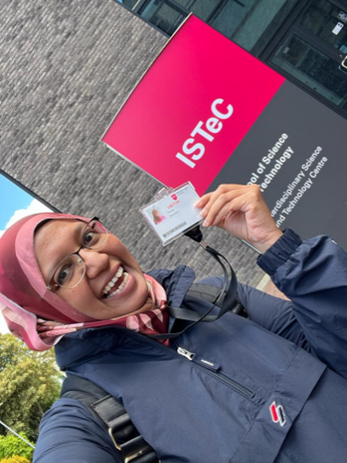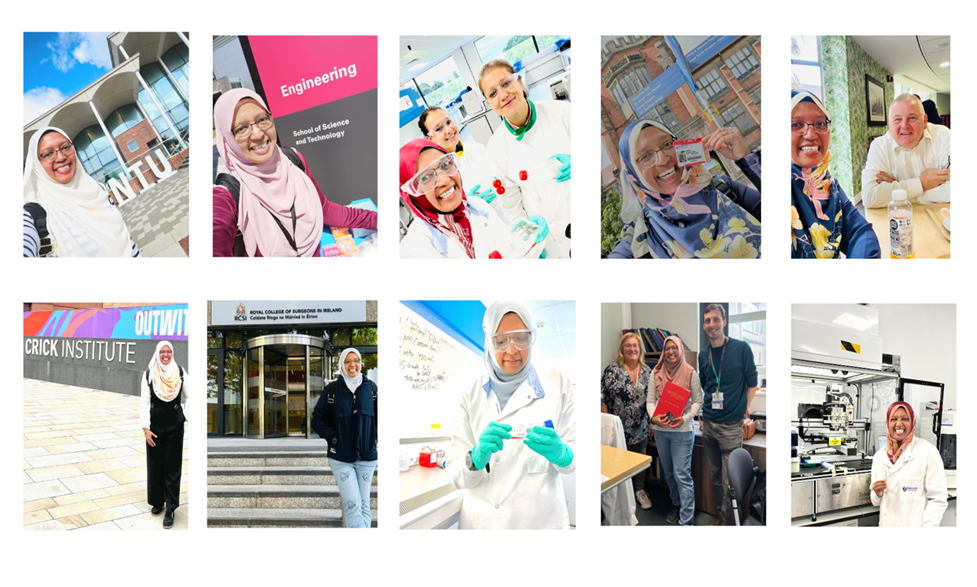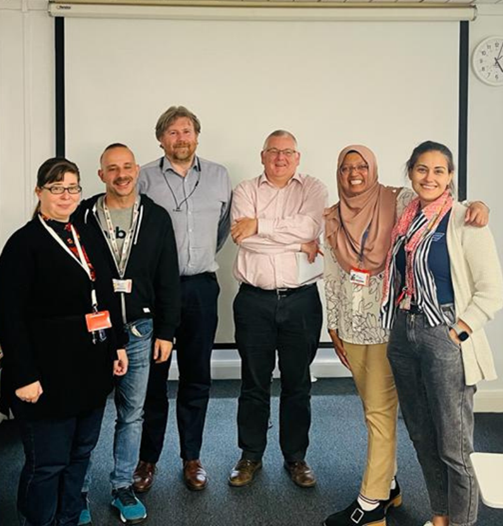By Dr Yanny Marliana
Our mobility is often taken for granted. That is, until we’ve lost some limb function to get us from point to point.
Thankfully, our forefathers - in the fight to survive, were quick to remedy this.
Ancient Egyptians are said to be amongst the earliest to attempt bone reconstruction - using wooden splints to immobilise broken bones. During the Middle Ages, as techniques improved, Islamic physicians started using metal pins to hold bone fragments together, a method used till this day.
Today, bone and tissue grafting have also become a common practice and the technology has flung the doors wide with polymers and synthetic bone substitutes which accelerate bone reconstruction. With a range of computer-assisted techniques and materials, Dr Yanny Marliana shares brief insights about what compelled her to embark on this journey…
How did you get into this area of research?
Growing up with parents in the medical field, I observed the plight of many – and often, too many, hospital patients, whose mobility was severely diminished due to accidents. Armed with a curious mind, and with encouragement from my parents, I proposed to make change.
Today, as a registered Graduate Engineer and senior lecturer at School of Materials & Mineral Resources Engineering, Universiti Sains Malaysia (USM), my work revolves around finding a solution to fix injuries caused by bone trauma and to help patients suffering from serious bone injuries recover and improve their quality of life.
 What are you working on?
What are you working on?
Using new methods to develop advanced materials for medical applications, I am examining methods for reconstructing bone material - which has been a challenge in terms of affordability and availability.
For the past 12 years, developing new biomaterials for medical and dental applications has been my primary interest. But creating these materials alone is not enough without understanding the interaction between these materials and a cell’s biologically.
Although my latest findings conclude waste material generated from dental mould waste can be successfully transformed into a useful source of bone material, there are still many other considerations before this can become mainstream.
While this innovation is environmentally friendly, cheaper, and non-toxic to the cells, we must investigate how we can have better biocompatibility and functionality to speed up bone regeneration.
Today, 3D Bioprinting technology allows us to print various designs imitating tissues and organs by combining the cells, growth factors and biomaterials all together. This is simply amazing and it’s something that will accelerate the outcomes of my research!
 Could you share your experience in the UK?
Could you share your experience in the UK?
I headed back to the cell culture lab after over six years - which was quite challenging for me. I had to relearn handling living cells and needed a quick refresher on all the do’s and don’ts whilst supervising summer project students- but it was fun!
During the three months of academic attachment in the UK, I spent about seven weeks at Nottingham Trent University with my collaborator, Dr Yvonne Reinwald.
I received invitations to visit six prestigious biomedical institutions in the UK and Europe, including the Tissue Engineering Research Group Laboratories at the Royal College of Surgeons in Ireland, the Faculty of Engineering at the University of Nottingham, the Institute of Translational Medicine at Technische Universitat Berlin, the University of Birmingham's Guy Hilton Research Centre, and the Francis Crick Institute in London.
These institutions are all known for their focus on biomaterials and tissue engineering research. During my visit, I had the privilege of meeting experts in the field whom I had previously only known by name, delivering a research seminar to present my work, proudly representing my institution, USM, and our country. I also had the opportunity to learn about new technologies through lab tours, expand my network, and stay current with the latest research trends in the UK.
I then spent the following five weeks with Prof Kenny Dalgrano’s group at Newcastle University.
 Are there things you plan on doing differently in your research now that you are back, and if so what?
Are there things you plan on doing differently in your research now that you are back, and if so what?
My three-month attachment journey provided valuable experience that sparked new ideas for me to explore the world of biomaterials - beyond producing compatible and functional bone tissue engineering and dental application. There are many possibilities to experiment with 3D bioprinting techniques to culture cells beyond the conventional method of seeding cells directly onto scaffolds. I believe this approach will enhance cell attachment and activity, ultimately accelerating the healing process when the implant is placed in the patient's body.
How else did you grow as a person while in the UK?
In addition to enhancing my knowledge and skill in the subject areas, I’ve sharpened my leadership skills, as well as administration and management strategies which I now apply in different work environments and across different cultures.
Throughout my stay, I was fortunate to be given the opportunity to meet the experts in my field, mentors, former supervisors, and new collaborators - all of whom have inspired me in many aspects of life to hopefully one day become a respected Professor.
I take pride in being part of the growing community of women in science. The United Nations recognizes the importance of science for our world, and I fully agree that having more women involved is crucial.
The message "the world needs science, and science needs women'' is a powerful call to action that inspires us to work towards greater diversity and inclusivity in STEM related careers. I hope to encourage and empower more young women to pursue science and technology, and to help shape a better future for us all.